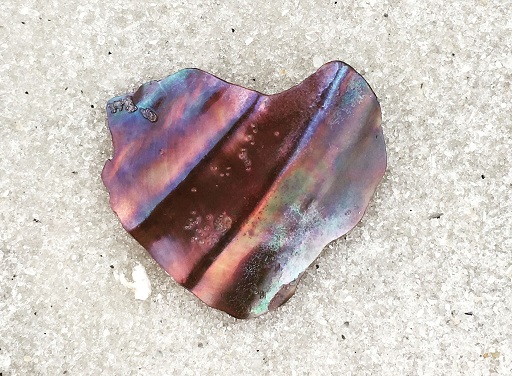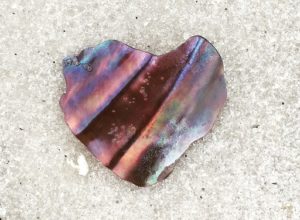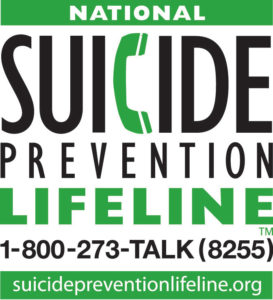Artist’s Story
World Suicide Prevention Day takes place each year on September 10. The day was first recognized in 2003 as an initiative of the International Association for Suicide Prevention and endorsed by the World Health Organization. All over the world, groups organize projects and events to help raise awareness. The Shell Project was launched in 2017: the 15th World Suicide Prevention Day. The year’s chosen theme was “Take a minute, change a life”. The Talmud says that “whoever saves one life, it is as if she has saved the whole world”. After careful reflection, the artist resolved to participate by releasing a project created to honor survivors of suicidal ideation, one that doesn’t take more than a minute to download, with hope of helping contribute to reducing suicide completions.
I wonder if I sound a bit like Meredith Brooks as I rattle off a list of Who I Am: I’m a daughter, I’m a sister, I’m a tía, I’m a granddaughter, I’m a cousin, I’m a niece; I’m a teacher and a mentor; I’m a dog owner; I’m a reader; I’m an ambivert; I’m a chef; I’m a filmmaker; I’m a writer; I’m a photographer; I’m a singer; I’m a friend. One of my functions in several of my friendships is being the go-to for sharing the worst of what life presents to those for whom I care the most. In my life, at least a dozen of my closest friends have confided to me over the years that they have experienced suicidal ideation. The first was my first serious boyfriend when I was in high school. I have heard recounted trips to hospitals where shoelaces had to be handed over to doctors with waiting periods before they could be returned. And, part of what I believe makes friends comfortable to share these experiences with me is that many of them know that I was once diagnosed by a doctor as “a cupcake”. Far from a clinical diagnosis, the doctor made the metaphor as I am host to sprinklings of depression and generalized anxiety. And saying so online should not be any different than a person saying they have had cancer or diabetes. But mental health stigma is so pungent in our society, sharing my story here does rattle the nerves a bit.
Cupcakes are also not every-day treats, and my issues come and go. Much of the time, I am fine. While I admit I am like Bette Midler’s character in Beaches–I feel things “very deeply”–my mood typically curves like soft ocean waves. But, just as I tend to catch the flu every winter since age fourteen without warning, I also seem to have periodic bouts of depression and anxiety that attack as a team like Bonnie and Clyde. They roll in to town without warning, shoot the place up, rob me of my assets, and then leave before the cops come. Recouping from these episodes is draining. Each time the villainous team arrives it feels they destroy priceless antiques in their rampage, and the accumulated losses finally led me to see a doctor; it was getting harder to shake off the residual damage left in the wake of these episodes, and making it through the day during the weeks they terrorized the neighborhood was becoming more challenging. Sometimes, I found myself knowing I would eventually feel better, but questioning if I would be able to sustain until I did. One of those times, I reached out to Lifeline to get me through it.
The concept of תיקוןעולם (Tikkun Olam) is “to repair the world” and it’s an ideal that defines my life. Tikkun Olam does not mandate that we accept the challenge of fixing everything in this world, but that we must do what we can to make the world a better place to be in whatever way we can. Throughout my life I have found various ways to make the world a better place – planting trees, teaching, organizing projects to fundraise research for cures to various diseases – and in 2014, I found a path to invest my professional time to help save young lives from suicide completion.
In my role as a school-based suicide prevention educator, I attended the American Association of Suicidology’s (AAS) national convention in California. That year, the AAS took the historic step of approving a membership division of their organization for people who have been suicidal and their supporters. I sat in a seminar where the core foundational leadership at the heart of this new division shared their goal was “to make sure people who’ve been suicidal are central to research, policy-making, public messaging, treatment and support.” Several of them shared their stories, what it was like to go to the edge and live to tell the tale. This workshop included sharing photographs from the Live Through This project.
As I listened to the survivors speak and watched the collection of images of suicide attempt survivors on the screen, my chest felt tight. I was amazed at how open they were about having thought about or attempted suicide. I sat in the packed room, costumed in my suit and pearls and wondered if this is how my gay friends felt before they came out of the closet; despite the fact that I was in a professional role working to reduce the stigmatization of mental health, my response to the workshop made it clear that I am a victim of society’s brainwashing—even in a safe space with others who had faced what I faced, I felt shame for my bouts of mental illness. Unlike some of my friends who post openly on their social media pages about their mental health struggles when they have a hard time—while close friends and family know what I experience—until the release of The Shell Project I have generally kept it private. Even at a convention in a room full of people “like me”, I said nothing. By the end of that session, I was abashed: feeling cold, I got my car, and drove to my sister’s house for hugs. On the freeway, I was stuck in traffic and thought about the bravery of those survivors for coming forward. In my work, I taught mental health issues aren’t a choice – as epilepsy is not a choice – and truly questioned my response at the seminar, and what I would do about it.
Over the next eight months I went into schools and talked to kids about the warning signs and risk factors, provided resources, and served as a bridge to help. But, I never mentioned I was a survivor; I rationalized that sharing my experience would make the presentation about me when the workshops were really designed to share information to help keep each other safe. It was a fulfilling yet jarring experience. Every school where I presented the 120-minute suicide prevention program, kids came up after the class to tell me about friends who shared a want to die, and asked for help. Some showed text threads on their phones or chat conversations where someone conveyed a want to die. Often when I arrived at the school, I was made aware there had been an attempt by a student the weekend prior, or the counselor couldn’t check me in personally because there was an active crisis with a team needing to be called in.
Suicide is responsible for killing more teens annually than cancer: suicide completion is the 2nd cause of death among 25-34 year olds and the 3rd cause of death among 15-24 year olds. 1 in 7 high school student self-report they have experienced ideation [thoughts of suicide]. Beyond the classroom, it is understood that on average there are 121 suicide completions every day.
Born with the soul of a poet, like Allen Ginsberg I also believe “happiness exists” but find myself crying often, tears for the “world’s soul” – because “the world has a beautiful soul”. Eventually, the stories and the statistics rattled my sensibilities at the core. The need for the work I was doing was obvious, but Bonnie and Clyde were becoming almost regular guests and I went to work overwhelmed with sadness; I resolved I would need to find another way to help.
Over a two-year period, Bonnie and Clyde made their hideout in me. It was the first time I couldn’t seem to find a way to coax them to move on to the next town after a few weeks. This had never happened before. Once or twice, I entertained looking for an exit. But, the meat of life’s story is more thrilling to engage in to the last page, so I maintained faith that I would feel better and kept reading. I found myself being much more open about having to deal with anxiety and depression and the ideation I sometimes faced in private conversations with friends and family. Many of them had already told me of their own experiences with ideation, and my sharing opened the door and a few people shared they had once been in my shoes.
A relative of mine is diabetic and is not defined by a need to take insulin. My being a survivor doesn’t define me as a person. It’s now part of my Meredith Brooks list. But, once I learned how many people I know have survived ideation once I shared my experience, I realized the value in “coming out of the closet”: people who suffer and survive need to help each other, especially because statistically having ideation once means a person might have it again. Having a community who understands,to reach out to, it can be a difference in a life. Further, I realized from my experience at the conference that I wouldn’t be ashamed to tell people if I were diabetic and needed insulin shots, but that I felt shame about dealing with bouts of occasional depression and anxiety. The day I woke up sad for no reason and a friend impatiently told me to “snap out of it”—as though I would choose to be sad—made me realize that I needed to contribute to efforts to squash the idea that depression and other mental health issues are choices, that people suffering episodes are not being indulgent and lazy.
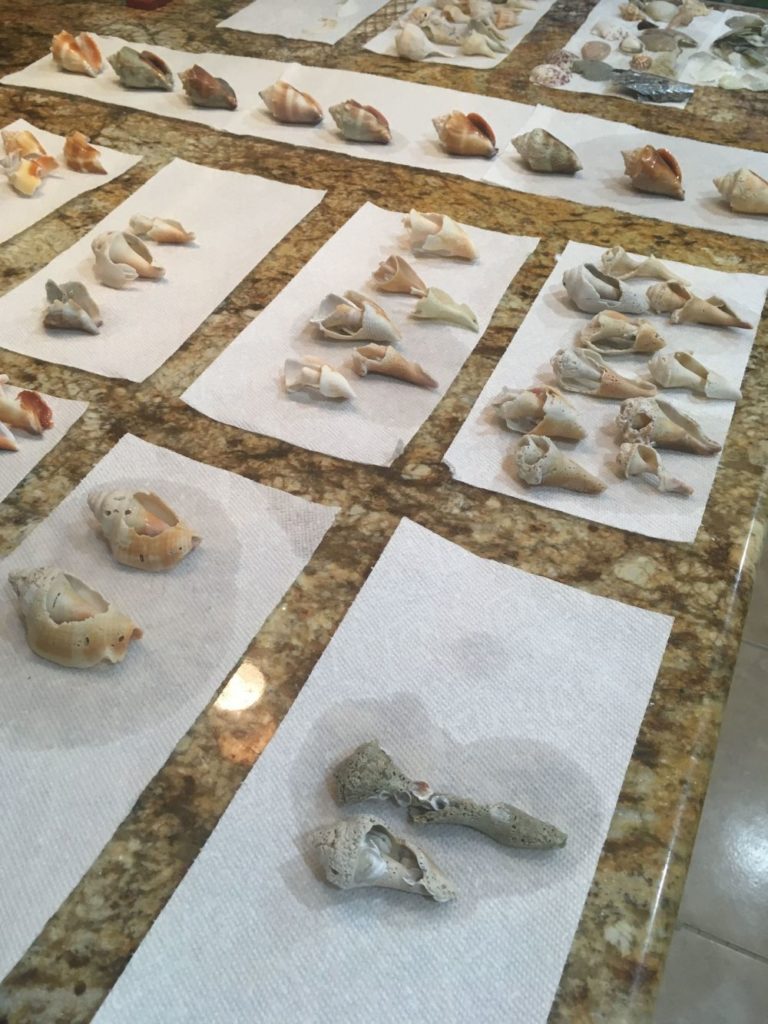 Bonnie and Clyde finally left town and I worked on cleaning up their mess. I visited my parent’s house in Marco Beach to clear my head and get a little vitamin D, and drove down to the beach. Fighting conch shells were washed up along the shore in various conditions, and my muse whispered in my ear the idea for The Shell Project. I grabbed my bag and began collecting shells. Whole shells (that didn’t have “anyone home” if I took them –no animals were sacrificed to make this project), fossilized shells, and broken shells were collected over two days. Once they were cleaned, they were sorted by size, shape and color. Back home, wooden shadowboxes were stained and the shells affixed.
Bonnie and Clyde finally left town and I worked on cleaning up their mess. I visited my parent’s house in Marco Beach to clear my head and get a little vitamin D, and drove down to the beach. Fighting conch shells were washed up along the shore in various conditions, and my muse whispered in my ear the idea for The Shell Project. I grabbed my bag and began collecting shells. Whole shells (that didn’t have “anyone home” if I took them –no animals were sacrificed to make this project), fossilized shells, and broken shells were collected over two days. Once they were cleaned, they were sorted by size, shape and color. Back home, wooden shadowboxes were stained and the shells affixed.
When I drove back to the beach in mid-July to photograph the boxes, I felt heavy again. I could hear the V8 Ford sputtering towards me from just beyond the horizon; I wasn’t used to Bonnie and Clyde coming back so soon. But I was resolute; I would not let them keep me from my work. I went down to the beach where I found the fighting conch shells and carried the boxes in a laundry basket to the breakwater. Carefully, I climbed the rocks until I found a spot where there was a gap and just enough of a shelf made by the surrounding rocks to hold the boxes, while still revealing a bit of space below; I wanted the viewer to notice the space to give the illusion there was an option to sink into that dark space, but that the choice was made to remain above it.
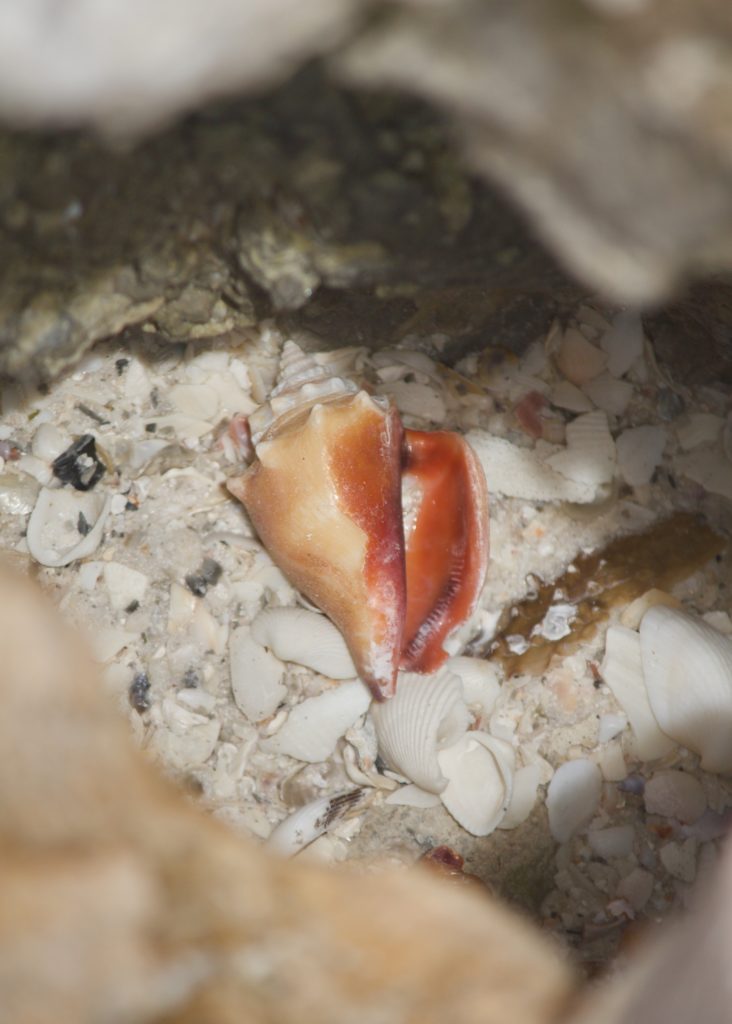 It felt like it took three times more energy than it normally would to take the photographs, and my body ached as if I ran a marathon after about thirty minutes. When I was finished and packed up the boxes, I noticed something gleaming on the sand below where the boxes had been: a fighting conch shell, whole and intact. I reached in, pulled it out, and held it in my hand like a talisman, thinking about all the work I’d done and how far I’d come after Bonnie and Clyde’s extended visit. It was hard to feel triumphant—the juxtaposition between the day of shell collection and the day of art photographing was so blatant—but I recognized I was doing okay. I took a break and floated on the calm bath-warm water of the Gulf of Mexico, let it make me weightless. After a few moments, I felt much better and realized what I thought was their car approaching was just an innocent passer-by. Smiling, I took a second set of pictures of some of the boxes from that spot, in the water.
It felt like it took three times more energy than it normally would to take the photographs, and my body ached as if I ran a marathon after about thirty minutes. When I was finished and packed up the boxes, I noticed something gleaming on the sand below where the boxes had been: a fighting conch shell, whole and intact. I reached in, pulled it out, and held it in my hand like a talisman, thinking about all the work I’d done and how far I’d come after Bonnie and Clyde’s extended visit. It was hard to feel triumphant—the juxtaposition between the day of shell collection and the day of art photographing was so blatant—but I recognized I was doing okay. I took a break and floated on the calm bath-warm water of the Gulf of Mexico, let it make me weightless. After a few moments, I felt much better and realized what I thought was their car approaching was just an innocent passer-by. Smiling, I took a second set of pictures of some of the boxes from that spot, in the water.
I keep the pictures with me—and have shared prints with several friends, many who are survivors or who struggle with mental illness—but I gifted the boxes to eight people who helped me regain my life, in different ways. Each recipient is a survivor, several have had recurring bouts of ideation. Each is a person I love whole-heartedly. Each of these boxes has come to represent a light of life in this world that once flickered in hurricane-strength winds, but lived on. Each glows brightly for having fought and survived. And regains the flame when the winds blow, frantic to remain in this world. My project honors them and all survivors who chose hope and life, even when all seemed lost.
With restored health, I returned to New Orleans: the city my muse craves for us to create. After the original boxes were made and this site released, I learned of more people in my life that survived ideation. Many are young. Two were former students, one who tattooed the image of a heart monitor’s beating lifeline across her wrists as a reminder to live. Another was a childhood friend. One was a third grade child, bullied so severely she ended up being hospitalized from the depression. After hearing news another friend from childhood had just barely escaped the clutches of ideation, I was roused to create another batch of boxes. Photographed in New Orleans against the backdrop of a graffiti garden, the boxes were gifted in the summer of 2019. A few of the recipients were vocal online about the totem I sent them–to champion their having survived, and to serve as totems to ground them should they face ideation again.
In the wake of having lost a friend to suicide, web designer Mathew Butka joined me again to add photos of the second phase of the project to the site to align with World Suicide Day 2019. This is the second year the WSPD theme is “Working Together to Prevent Suicide”. In 2018 I aligned with other artists in Boca Raton to bring art and music into the world on September 10 to benefit NAMI. In 2019, Mathew’s and my hope is that our working together on this site will offer anyone who is battling mental health issues the chance to obtain their own copy of The Shell Project, to serve as a beacon when it seems there is no light.
